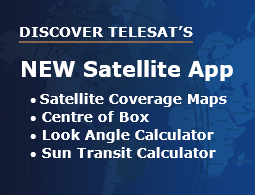The advent of truly autonomous shipping is just beyond the horizon. Taking advantage of automation in the shipping industry offers many advantages – greater safety, reduced energy consumption, reduced operational costs, and even reduced threats of piracy. For these and other reasons the research firm Allied Market Research projects that the autonomous ship market will reach $134.9 billion by 2030, with commercial shipping being 75 percent of that total.
Autonomous shipping will evolve in stages – it won’t be a sudden shift to robotic ships with no crew immediately. According to the International Maritime Organization, there are four degrees of vessel autonomy:
- Ship with automated processes and decision support: Sailors are on board to operate and control shipboard systems and functions. Some operations may be automated.
- Remotely controlled ship with seafarers on board: The ship is controlled and operated from another location, with a lean crew of sailors still on board.
- Remotely controlled ship without seafarers on board: The ship is controlled and operated from another location. There are no sailors on the ship.
- Fully autonomous ship: The operating system of the ship can make decisions and take actions by itself.

To date, adoption has been slow within the industry, and as a whole, it has not been able to move beyond the first stage of autonomous shipping. While regional near-shore operations are starting to benefit from remote control and some early trials with full automation, autonomous shipping requires higher throughput, lower latency and higher resiliency than what can be achieved using geostationary (GEO) satellite connectivity, the current primary means of communications for merchant vessels.
Digital technologies are the key to unlocking autonomy but many of these groundbreaking new technologies depend on the presence of seamless, low-latency connectivity. This makes adoption a challenge for operators, particularly deep water and arctic operations that are frequently out of range of traditional terrestrial networks.
Ships operating beyond well-populated coastal waters where LTE and 5G are available will require higher throughput, lower latency, global coverage, and higher resiliency to implement remote control. This is exactly why Telesat has designed an enterprise-class LEO network. Unlike most of the contended, consumer broadband LEO designs from others, Telesat remains focused on providing our connectivity service providers with guaranteed committed information rates and SLAs, so they in turn can create differentiated services for their customers.
The Telesat Lightspeed architecture will deliver unprecedented performance and flexibility for our partners serving the needs of shipping operators. Telesat Lightspeed was designed to be steerable fibre in the sky, ready to fill the gap wherever terrestrial fibre is not possible. This highly flexible and scalable LEO backhaul network connects ships to the core telecom network and puts operators in charge of when, and how they move through the stages of autonomous shipping.
Telesat Lightspeed is designed to deliver unprecedented performance and flexibility, focusing capacity on heavy traffic regions. The initial constellation will offer multiple Tbps of capacity globally – more than the combined capacity of all GEO satellites in orbit today.
Sophisticated antennas on each Telesat Lightspeed LEO satellite can dynamically focus up to 15 Gbps of capacity to a single location with latency <50ms. This will make the connectivity requirements holding back autonomous shipping problems of the past.
Unlike some other LEO operators, Telesat is taking an open architecture ecosystem approach to give customers freedom of choice for terrestrial infrastructure and components. Multiple antennas and modem technologies drive innovation, reduce costs and allow operators to move towards autonomous shipping at their own pace.
Communications networks used for autonomous vessels must have a high degree of resiliency and reliability. The Telesat Lightspeed network was designed with this in mind and has multiple landing stations in each service region, multiple satellites in the field of view for any ship, and inter-satellite links that result in a mesh network in space. This means there are diverse paths that traffic can traverse if there are ever any issues at a specific landing station or even with a specific satellite.
Enterprise-class LEO is the critical link to power the evolution of autonomous shipping. Telesat has designed a global and resilient virtual fibre network that delivers “big city” connectivity no matter what the location. This will deliver benefits for every part of the maritime market.




